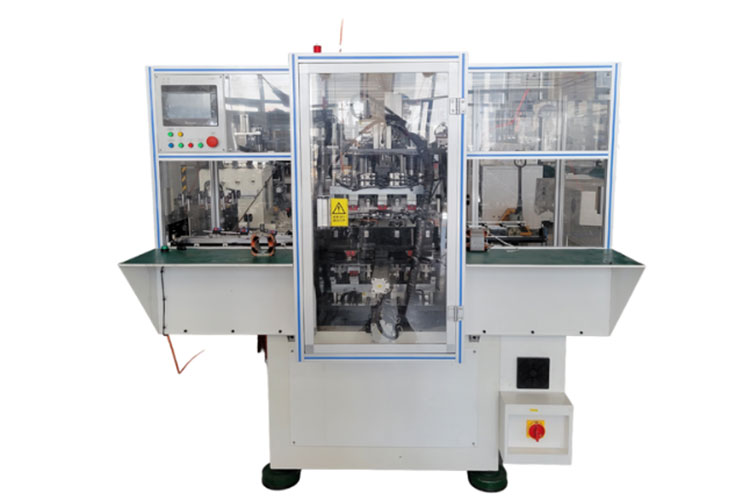Here are the key aspects of a brushed stator production unit
2023-10-16
A brushed stator production unit refers to a manufacturing facility or process dedicated to producing stators for brushed electric motors or generators. A stator is a stationary component in an electric motor or generator that contains coils of wire wound around it to create the electromagnetic field necessary for operation. In brushed designs, the stator's electromagnetic field interacts with the rotating commutator and brushes to generate motion. Here are the key aspects of a brushed stator production unit:
1. Brushed Stator: In brushed electric motors or generators, the stator is a fundamental component that works in conjunction with brushes and a commutator to generate rotational motion. The commutator and brushes reverse the current direction in the coils, creating a continuous circular motion.
2. Production Processes: A brushed stator production unit involves various processes, including coil winding, core assembly, commutator installation, testing, and quality control.
3. Coil Winding: Coils of wire are wound around the stator's core to create the electromagnetic field. Precision winding machines ensure consistent and accurate winding.
4. Core Assembly: The stator's core, typically made of laminated steel sheets, is assembled to provide a path for the magnetic flux and support the coils.
5. Commutator Installation: In brushed designs, a commutator is mounted on the motor's shaft. The commutator consists of segments that connect to the coils and brushes, enabling current reversal as the rotor spins.
6. Insertion of Components: Additional components, such as sensors or thermal protection devices, might be inserted into the stator as required.
7. Bonding and Insulation: The coils and components are often bonded and insulated to ensure electrical isolation and protection against vibration and heat.
8. Testing and Quality Control: Rigorous testing procedures are performed to ensure the stator's performance, electrical characteristics, and quality meet the required standards. This may include electrical testing, dimensional checks, and more.
9. Automation: Automation is utilized for processes such as coil winding, ensuring accuracy and repeatability.
10. Material Selection: The choice of materials for the stator's core and coils is essential for achieving desired electrical and mechanical performance.
11. Skilled Workforce: Skilled technicians and engineers are crucial for operating machinery, quality control, and addressing production challenges.
12. Customization: Brushed stators may vary in size, winding configuration, and other specifications based on the motor or generator design.
13. Compliance and Certification: Production units must adhere to industry standards and regulations related to electrical safety, quality, and environmental impact.
14. Packaging and Shipping: Finished brushed stators are packaged and shipped to manufacturers of electric motors, generators, and relevant industries.
Brushed stator production requires expertise in electromechanical engineering, materials science, automation, and quality control. Brushed motors are commonly used in various applications, including power tools, appliances, and certain types of automotive systems.



